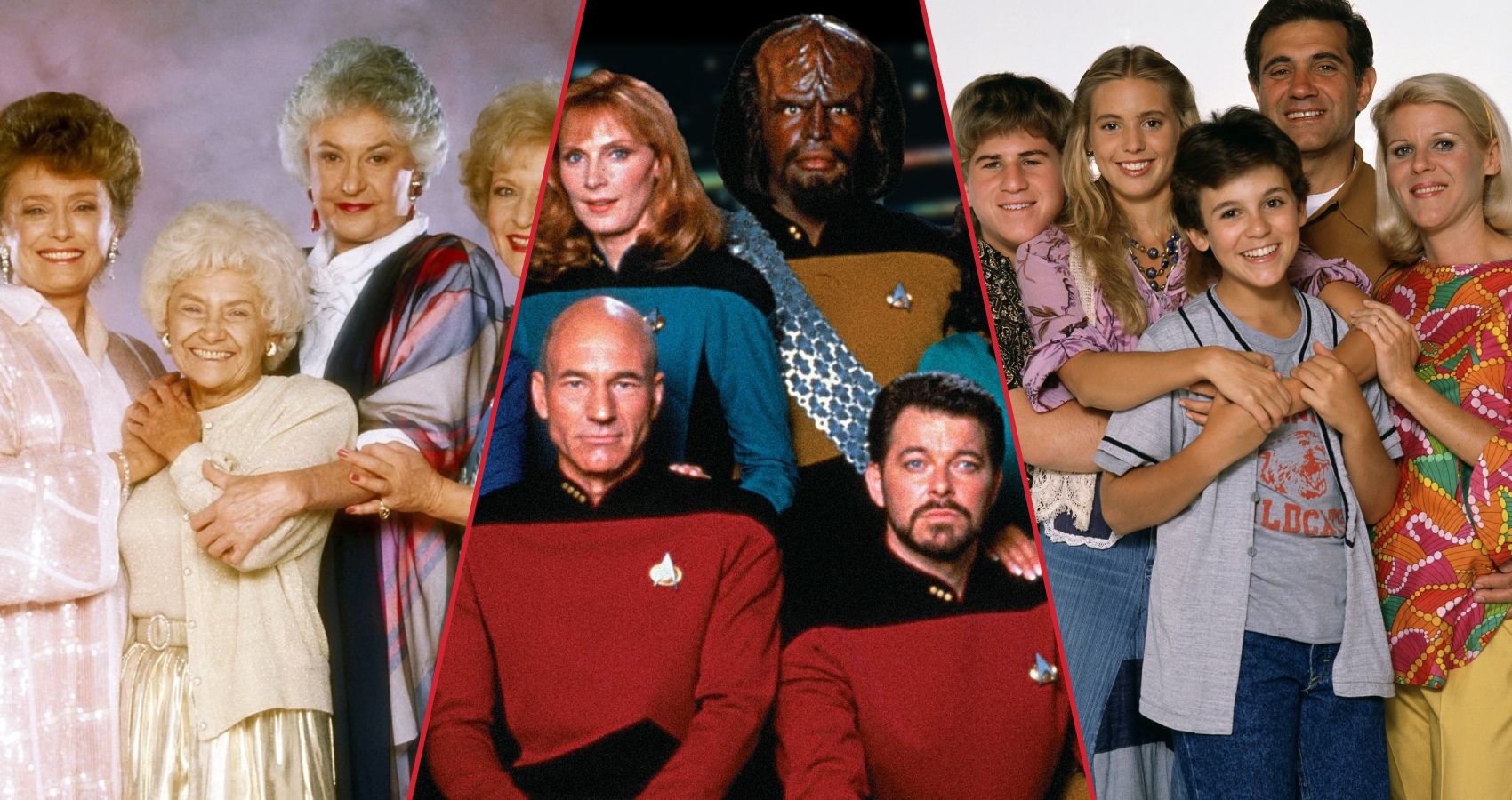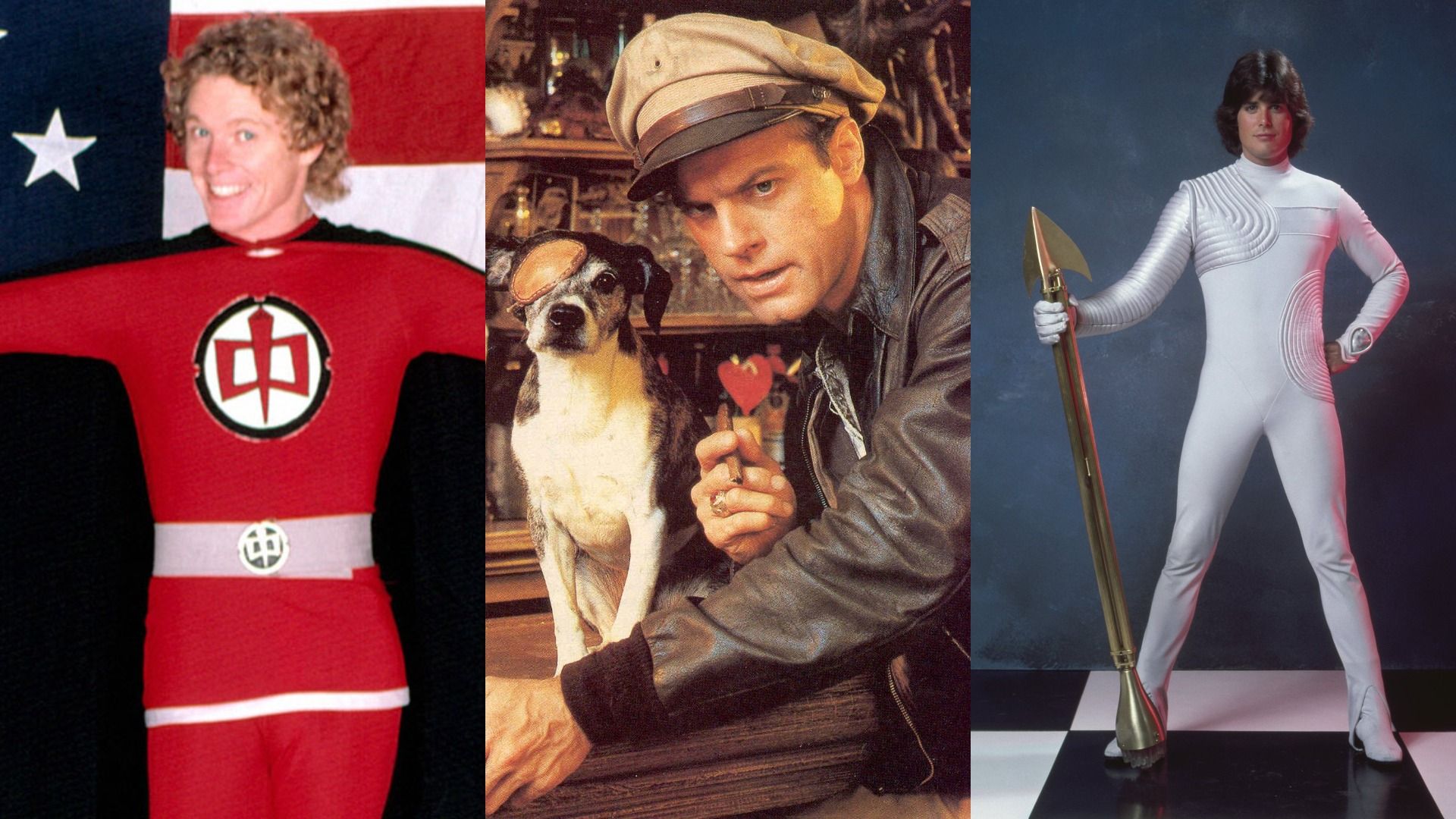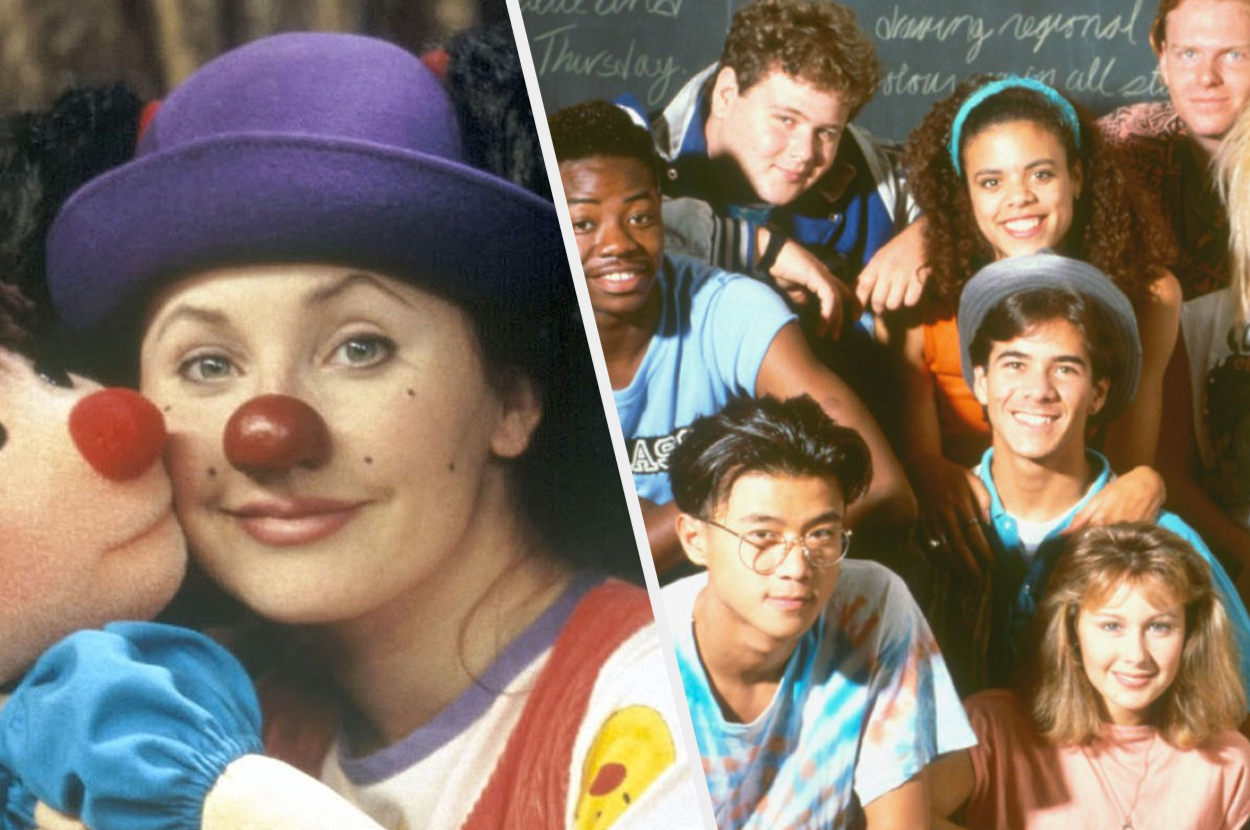Reliving The Rad: Popular 80s TV Shows That Defined A Decade
Introduction
The 1980s, a decade synonymous with big hair, neon colors, and groundbreaking music, also left an indelible mark on the landscape of television. For many, the very mention of the '80s conjures up vivid memories of evenings spent glued to the screen, eagerly anticipating the latest episodes of their favorite shows. These weren't just programs; they were cultural touchstones, shaping conversations, fashion, and even our understanding of the world. The term "popular," in its truest sense, describes something "regarded with favor, approval, or affection by people in general," or "liked, enjoyed, or supported by many people." By this definition, the popular 80s TV shows truly lived up to their name, captivating millions and becoming a shared experience for an entire generation.
From gritty crime dramas that pushed boundaries to heartwarming family sitcoms that brought us together, 1980s television offered an eclectic mix that appealed to every demographic. This era witnessed a significant evolution in storytelling, production values, and the very concept of what a television series could achieve. Join us on a nostalgic journey as we revisit some of the most beloved and influential series that cemented their place in television history, exploring what made them so universally "popular" and why their legacy continues to resonate today.
What Made 80s TV So Popular?
The 1980s was a unique period for television, characterized by several factors that contributed to the widespread appeal of its programming. To understand the phenomenon of popular 80s TV shows, it's crucial to consider the socio-cultural backdrop and technological advancements of the time. The definition of "popular" as "of or relating to the general public" perfectly encapsulates the reach of these shows, as they often became common household fixtures, discussed at water coolers and schoolyards alike.
Firstly, cable television was still in its nascent stages for many households, meaning the major networks (ABC, CBS, NBC) dominated viewership. This centralization of programming meant that a few hit shows could capture an enormous share of the audience, fostering a collective viewing experience. Everyone was often watching the same thing, leading to shared cultural references and a sense of community.
Secondly, the storytelling evolved. While the '70s had introduced more complex narratives, the '80s perfected them, blending compelling plots with charismatic characters. Shows began to explore more mature themes, often pushing the boundaries of what was acceptable on prime-time television, while still maintaining a broad appeal. This ability to be "liked or enjoyed by a large number of people" was a hallmark of the era's success.
Finally, the '80s embraced style and spectacle. From the iconic fashion of "Miami Vice" to the high-tech gadgets of "Knight Rider," shows weren't just about the story; they were about the aesthetic. This visual flair, combined with memorable theme songs and catchphrases, made these series highly marketable and deeply ingrained in the public consciousness. They became "common among the general public," not just as entertainment but as cultural statements.
Iconic Dramas: Gritty Realism and High Stakes
The 1980s delivered a new breed of television drama, moving beyond traditional formats to explore darker themes, complex characters, and innovative visual styles. These were the shows that kept viewers on the edge of their seats, proving that television could be as compelling and cinematic as feature films. Their ability to capture and hold the attention of a vast audience solidified their status as truly popular 80s TV shows.
Miami Vice: Style and Substance
When "Miami Vice" premiered in 1984, it wasn't just a police procedural; it was a cultural phenomenon. Executive produced by Michael Mann, the show redefined television aesthetics with its vibrant pastel color palette, sleek cinematography, and a soundtrack heavily featuring contemporary pop and rock hits. Set in a stylized, sun-drenched Miami, the series followed undercover detectives James "Sonny" Crockett (Don Johnson) and Ricardo "Rico" Tubbs (Philip Michael Thomas) as they tackled drug trafficking, murder, and other crimes.
- Impact on Fashion: Crockett's pastel T-shirts, unconstructed blazers, and Ray-Ban Wayfarers became iconic, influencing men's fashion globally.
- Music Integration: Unlike other shows that used incidental music, "Miami Vice" integrated hit songs, often playing them in their entirety during montages, making the music as much a character as the actors.
- Gritty Realism: Despite its glossy exterior, the show often delved into dark, morally ambiguous themes, reflecting the growing concerns about drug culture and crime.
"Miami Vice" was a masterclass in mood and atmosphere, appealing to a broad audience who appreciated its blend of action, drama, and cutting-edge style. It demonstrated how a television show could transcend its genre to become a trendsetter, making it one of the most "regarded with favor, approval, or affection by people in general" shows of its time.
Magnum, P.I.: Charisma and Aloha
Running from 1980 to 1988, "Magnum, P.I." offered a different flavor of drama: a charismatic private investigator operating in the lush backdrop of Hawaii. Tom Selleck starred as Thomas Magnum, a laid-back, charming Vietnam veteran living in the guest house of a luxurious estate, solving crimes while enjoying the perks of his idyllic surroundings. The show masterfully blended action, mystery, and humor, often breaking the fourth wall with Magnum's internal monologues.
- Selleck's Charisma: Tom Selleck's portrayal of Magnum, with his signature mustache and Ferrari, made him one of the decade's biggest stars.
- Hawaiian Setting: The beautiful Hawaiian scenery was a character in itself, offering a sense of escapism for viewers.
- Balance of Tone: The show skillfully balanced serious crime-solving with lighthearted banter and emotional depth, appealing to a wide demographic.
"Magnum, P.I." wasn't just a detective show; it was an exploration of friendship, loyalty, and the lingering effects of war, all wrapped in an entertaining package. Its consistent high ratings and widespread fan base underscore its status as one of the most "liked, enjoyed, or supported by many people" series of the 1980s.
Unforgettable Comedies: Laughter That Lasts
The 1980s was a golden age for sitcoms, producing a string of comedies that not only made audiences laugh but also tackled social issues and redefined family entertainment. These shows were the backbone of prime-time television, bringing families together and creating shared moments of joy. Their ability to resonate across generations made them incredibly popular 80s TV shows.
The Cosby Show: Family Values and Ratings Gold
"The Cosby Show," which premiered in 1984, was an absolute phenomenon. Starring Bill Cosby as Dr. Cliff Huxtable and Phylicia Rashad as his wife Clair, the series depicted an affluent, loving African-American family living in Brooklyn. Unlike many sitcoms of the era that relied on slapstick or catchphrases, "The Cosby Show" focused on everyday family dynamics, parenting challenges, and the humor found in domestic life.
- Groundbreaking Representation: The Huxtables presented a positive and realistic portrayal of an African-American family, breaking stereotypes and showing universal family experiences.
- Massive Popularity: The show consistently ranked number one in the Nielsen ratings for five consecutive seasons, a feat rarely achieved.
- Focus on Dialogue: Humor often stemmed from witty banter, moral lessons, and the relatable struggles of raising children.
"The Cosby Show" was more than just a comedy; it was a cultural touchstone that influenced how families were portrayed on television and proved that wholesome, intelligent humor could achieve unparalleled success. It was "regarded with favor, approval, or affection by people in general" on an unprecedented scale.
Cheers: Where Everybody Knew Your Name
Running from 1982 to 1993, "Cheers" quickly became a beloved classic, set in a Boston bar where "everybody knows your name." The show centered on the lives of the bar's owner, Sam Malone (Ted Danson), a former Red Sox pitcher, and his eclectic group of employees and regular customers. Its strength lay in its witty dialogue, character-driven humor, and the evolving relationships between its memorable cast.
- Ensemble Cast: The show excelled with its strong ensemble, with each character bringing a distinct personality and comedic timing.
- Relatable Setting: The bar setting provided a microcosm of society, allowing for diverse interactions and conflicts.
- Smart Writing: "Cheers" was lauded for its sharp, intelligent scripts that avoided cheap laughs in favor of character development and clever banter.
"Cheers" created a comforting, familiar world that viewers looked forward to visiting each week. Its enduring appeal and critical acclaim solidified its place as one of the most "liked, enjoyed, or supported by many people" comedies, proving that a simple premise with brilliant execution could achieve lasting popularity.
Action & Adventure: Heroes for a New Era
The 1980s was a decade of larger-than-life heroes, thrilling car chases, and explosive action sequences, and television was no exception. These action-adventure series provided escapism and excitement, often featuring iconic vehicles and unforgettable characters who fought for justice. They were undeniably among the most popular 80s TV shows, captivating audiences with their adrenaline-fueled plots.
One prime example was "The A-Team" (1983-1987), which followed a group of ex-Special Forces soldiers on the run, who worked as mercenaries helping the innocent. With its over-the-top action, signature catchphrases ("I pity the fool!"), and memorable characters like Mr. T's B.A. Baracus, the show became a massive hit. Its cartoonish violence and emphasis on teamwork made it appealing to a wide demographic, particularly younger viewers. The show's enduring appeal meant it was "liked, enjoyed, or supported by many people" across different age groups.
Another staple was "Knight Rider" (1982-1986), starring David Hasselhoff as Michael Knight, a crime fighter assisted by K.I.T.T., an artificially intelligent, self-aware, and virtually indestructible Pontiac Trans Am. The show's futuristic premise, K.I.T.T.'s voice (provided by William Daniels), and the dynamic between man and machine captivated audiences. "Knight Rider" perfectly blended action with science fiction elements, making it a truly "common among the general public" favorite.
These shows, while often fantastical, tapped into a desire for justice and heroism, offering a clear distinction between good and evil. They were visually exciting and provided a weekly dose of thrills that kept audiences coming back for more, solidifying their place as defining action series of the decade.
Sci-Fi & Fantasy: Escapism at Its Best
The 1980s also saw a resurgence in science fiction and fantasy on the small screen, building on the success of blockbuster films like "Star Wars" and "E.T." These shows transported viewers to other worlds, explored futuristic possibilities, and delved into the supernatural, offering unparalleled escapism. Their imaginative narratives and special effects, for their time, made them incredibly popular 80s TV shows.
"The Twilight Zone" (1985-1989 revival) attempted to recapture the magic of the original anthology series, presenting standalone episodes with twists, moral lessons, and explorations of the unknown. While it didn't achieve the iconic status of its predecessor, it kept the spirit of thought-provoking speculative fiction alive on television.
"V" (1984-1985), a miniseries turned short-lived series, depicted an alien invasion and the human resistance against them. Its allegorical themes about fascism and resistance, combined with its memorable special effects (like the aliens' true reptilian forms), made it a gripping and often chilling watch. It resonated with audiences who enjoyed high-stakes drama with a fantastical twist.
These shows, alongside others like "Automan" and "Manimal" (though less successful), showcased the decade's fascination with technology and the unknown. They pushed the boundaries of television production, attempting to bring cinematic-level effects to the small screen, and offered a different kind of narrative that was "liked or enjoyed by a large number of people" seeking something beyond the everyday.
Children's Programming: Building Blocks of a Generation
For many who grew up in the 1980s, Saturday mornings and after-school hours were defined by a vibrant array of children's television. These shows weren't just entertainment; they were often educational, character-building, and formative experiences that shaped the imaginations of a generation. The widespread affection for these programs made them undeniably some of the most popular 80s TV shows among young audiences.
Animated series dominated the landscape. "He-Man and the Masters of the Universe" (1983-1985) captured imaginations with its muscular hero, magical sword, and the eternal struggle against Skeletor on Eternia. It was a prime example of a show tied to a successful toy line, creating a synergistic marketing phenomenon. Similarly, "Transformers" (1984-1987) brought the epic battle between the Autobots and Decepticons to life, introducing complex mythology and memorable characters. Both shows were "liked, enjoyed, or supported by many people," extending their reach through toys, comics, and movies.
Beyond action-oriented cartoons, educational and character-driven shows also thrived. "Smurfs" (1981-1989) taught lessons about community and kindness through the adventures of tiny blue creatures. "Care Bears" and "My Little Pony" also emerged, promoting friendship and empathy.
These children's programs were instrumental in shaping the cultural literacy of young viewers, providing shared experiences and values. Their enduring presence in popular culture, even decades later, speaks volumes about their initial popularity and lasting impact on those who grew up watching them.
The Enduring Legacy of Popular 80s TV Shows
The influence of popular 80s TV shows extends far beyond their original broadcast dates. Many of these series have found new life through streaming services, DVD box sets, and syndication, allowing new generations to discover their charm and older fans to relive their youth. This continued relevance underscores their profound impact on popular culture and the television industry.
The stylistic choices of shows like "Miami Vice" continue to inspire fashion and visual media. The character archetypes and narrative structures established in comedies like "Cheers" and "The Cosby Show" can still be seen in modern sitcoms. Even the marketing strategies pioneered by children's programming, linking shows to toys and merchandise, remain a cornerstone of the entertainment industry.
Furthermore, the 80s laid much of the groundwork for the prestige television we see today. The willingness to tackle complex themes, invest in higher production values, and develop long-running character arcs in shows like "Hill Street Blues" (which started in 1981) paved the way for the sophisticated dramas of subsequent decades. The decade proved that television could be both broadly "popular" and critically acclaimed.
The nostalgia factor is also immense. For those who grew up in the 80s, these shows represent a simpler time, a period of shared cultural experiences before the fragmentation of media. The "growing popularity" of 80s nostalgia, as referenced in the provided data, is evident in the constant reboots, reunions, and homages to these classic series, proving their timeless appeal.
Conclusion: The Timeless Appeal of 80s Television
In retrospect, the 1980s truly was a golden era for television, producing a remarkable array of shows that captivated audiences and left an indelible mark on popular culture. From the gritty streets of "Miami Vice" to the cozy confines of "Cheers," and the heroic adventures of "The A-Team," these popular 80s TV shows transcended mere entertainment to become cultural phenomena. They were "regarded with favor, approval, or affection by people in general," defining what it meant to be "liked, enjoyed, or supported by many people" in the television landscape.
The decade's programming reflected a unique blend of evolving storytelling, technological advancements, and a shared viewing experience that is increasingly rare in today's fragmented media environment. The enduring appeal of these series, decades after their original runs, speaks volumes about their quality, creativity, and the deep emotional connection they forged with their audiences. They are more than just old shows; they are cherished memories, cultural touchstones, and a testament to the power of television to unite and entertain.
Which of these iconic 80s shows holds a special place in your heart? Share your favorite memories and tell us why these timeless classics still resonate with you in the comments below! If you enjoyed this trip down memory lane, be sure to explore our other articles on classic television and pop culture.
Table of Contents
- Introduction
- What Made 80s TV So Popular?
- Iconic Dramas: Gritty Realism and High Stakes
- Unforgettable Comedies: Laughter That Lasts
- Action & Adventure: Heroes for a New Era
- Sci-Fi & Fantasy: Escapism at Its Best
- Children's Programming: Building Blocks of a Generation
- The Enduring Legacy of Popular 80s TV Shows
- Conclusion: The Timeless Appeal of 80s Television

15 Greatest TV Shows of the 1980s

7 '80s Genre TV Shows in Need of a Reboot

Image Result For 80s Kids Tv Shows 80s Kids Tv Shows - vrogue.co